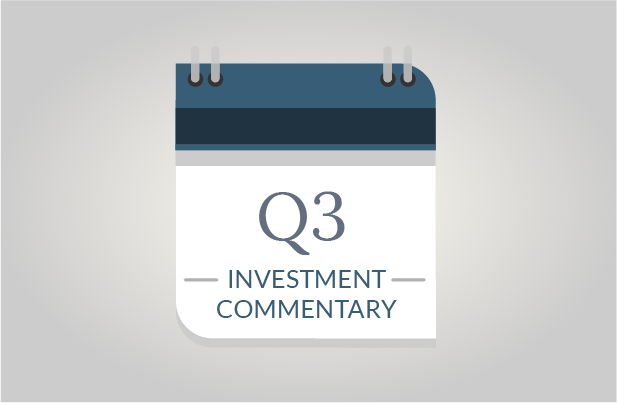- The Dow Jones Industrial Average and S&P 500 index climbed to new highs in the third quarter.
- The economy and the investment markets remain divided, but with economic improvements.
- Risks do exist, especially as we move closer to a potentially contested Presidential election.
New Stock Market Record Highs Defy Covid-19
The 2020 stock market rally that has defied all odds pushed even higher in the third quarter. After watching the Dow Jones Industrial Average (Dow) and the S&P 500 index plunge roughly 35% in a short six weeks from February into March, both market benchmarks staged an impressive bull market recovery in warp speed. Even more impressive, both market benchmarks established new all-time highs in the third quarter. In fact, the S&P 500 climbed from a bear market (represented by a 20% or greater decline) up to a new all-time high in record speed of only 126 trading days.
Few could have predicted such a sharp “V” shape stock market recovery during the depths of March. Yet, here we are, leaving most investors gleeful, but with some raising their eyebrows with questions.
We think it’s important to note that over the past few months we’ve experienced a distinct increase in client inquiries about the stability of the stock market recovery, questioning if there might be another market pullback. While we never try to time or predict the markets (as it’s a dangerous game), we are happy to offer our comments about different considerations pertaining to the markets, the economy and our approach to investment positioning.
The Stock Market Versus the Economy
Many people are questioning the stock market’s recovery relative to the state of the economy. While such questioning is understandable, it is normal for stocks to recover more quickly than the economy. The Federal Reserve Board and Congress injected massive amounts of stimulus into the economy earlier this year. Economic stimulus takes time to penetrate the economy, but from a stock market perspective (which is forward looking), green can simply mean go.
Fortunately, many businesses are finding ways to operate during Covid-19 whether it’s working remotely from home, requiring masks inside, or offering curbside pick-up and delivery services. There could be a flare-up in cases, but we expect that much of the economy will continue operating throughout the duration of the pandemic thanks to these adjustments.
While unemployment remains high, it is steadily declining as employers have been adding jobs for several months. Consumer spending, which is a key economic barometer, has ticked up. As of August, retail sales posted a third month of spending improvement. Manufacturing output has increased. Technology is in high demand, and the housing market is utterly booming thanks to low interest rates coupled with desires for extra space, improvements and second homes.
Looking forward, the Fed has signaled that they plan to leave interest rates low, potentially for years to support economic recovery. This is definitely accommodative to both the economy and the markets.
Virtually no one would say that the economy is at an ideal level, and there’s certainly a divide between economic sectors as well as between white and blue collar jobs. However, there is evidence of improvement, along with hope that progress could persist throughout the pandemic and beyond.
Potential Risks
The world and the markets always face risks, and they are certainly present in the current environment during a global pandemic. What if cases rise? What happens with lower unemployment benefits? What if technology stocks are overvalued? What if the Presidential election is contentious? The list is longer, but we feel that these are the primary considerations.
The Virus: With regard to the virus, no one can chart its path. Only time will tell. However, we do believe that significant strides have been made to slow virus transmission based upon precautions that most people are taking, such as wearing masks. We’re also hopeful about moving closer to a vaccine that could allow us to return to the state of life that we might have once taken for granted. Yes, things could get worse before they get better, but we have made progress.
Lower Unemployment Benefits: Lower benefit payments to unemployed individuals could stunt spending, potentially having an impact on the economy and/or the markets. However, people are returning to the workforce, and we do believe that employment opportunities will increase once a vaccine is available. A prime example is the devastated tourism industry. We fully expect a surge in travel once a vaccine is widely available, creating renewed job opportunities. We won’t be there tomorrow, but we will get there, hopefully in 2021.
Tech Stocks: The markets did stumble in September with pullbacks in technology stocks based upon concerns of overvaluation. Tech stocks have skyrocketed this year as so much of our lives have moved online during the pandemic. The top five companies in the S&P 500 (Apple, Amazon, Microsoft, Google and Facebook) recently comprised 23% of the entire index of 500 companies. This is the highest concentration seen in decades, particularly considering these companies represented only 14% of the index three years ago. Such concentration is something to monitor in terms of market risk. While we don’t know if technology demand will remain as high once the pandemic ends, we do believe that technology will remain a vital part of our economy.
The Elections: We are entering a potentially contentious election cycle with only a few more weeks until November 3rd. We don’t see distinct risks in terms of who wins between Democrats or Republicans. History has shown that the markets have thrived under administrations from both parties. However, a delay in processing all of the votes or a contested Presidential race could impact the markets if there’s protracted uncertainty. We believe it’s important to note two things. The results could be contested regardless of outcome, but we hope that market volatility would only result if there’s a narrow spread in votes. Furthermore, we believe that any potential volatility would be short-term, as we’re confident that our country can achieve an outcome relatively quickly, as was the case in the Bush-Gore election. As such, we would treat volatility from a contested result as a potential buying opportunity.
Our Investment Approach
SageVest does not believe in market timing. This year has been a superb example of the dangers that can result. Who could have predicted a global pandemic or the amazing surge in stocks during a pandemic?
Rather, we believe in a disciplined approach. This discipline led us to buy stocks at market depths and to trim back from stocks as they surged over the summer. We don’t know where the markets might lead us in the future, but we will continue this strategy, which has proven to be effective. Hence, if the markets do decline post the elections or for another reason, we plan to buy stocks again, as we did in March. We hope this opportunity won’t materialize, but we will be ready if it does.
If you’ve had concerns about the stock market’s comeback, the discussions we’ve been having with clients center on the level of protection that their portfolios offer. We always recommend holding at least five years of potential cash needs in cash or bonds. We certainly hope that the pandemic will end and that a recovery ensues well in advance of five years, giving you extra protection and reserves to buy into stocks if further stock-buying opportunities present themselves. Many of our clients hold greater reserves, helping to buffer market anxieties.
As always, we’re available to discuss your investment and financial considerations to ensure you’re comfortable. We always respect client preferences while offering our professional advice.




